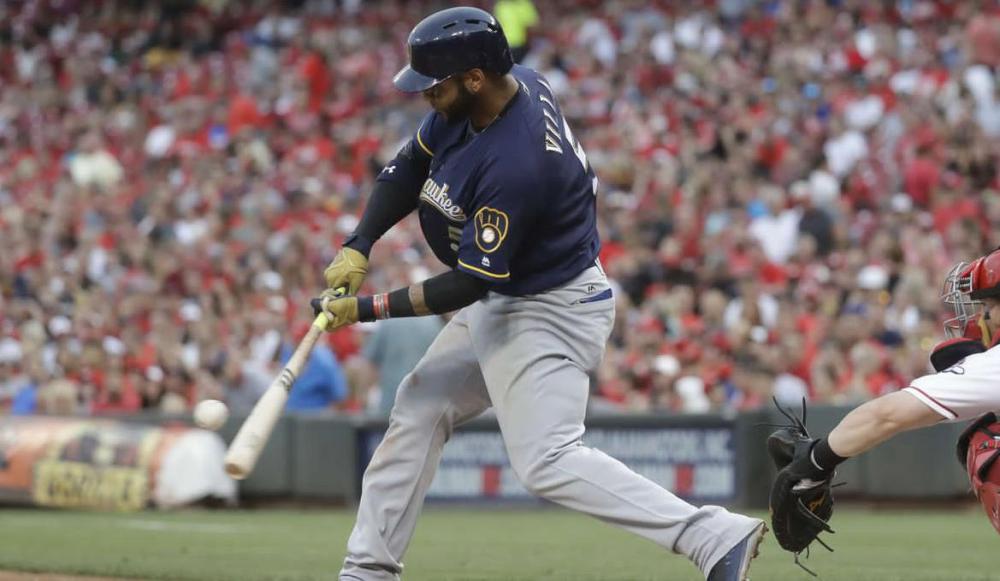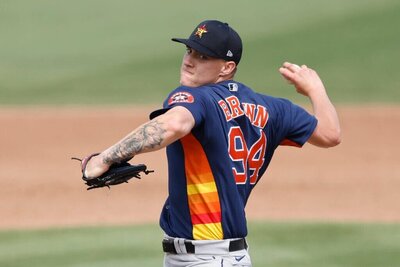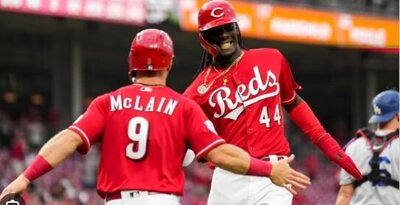Jesse Winker has been called up by the Reds, while reliever Barrett Astin has been sent down in the corresponding move. Winker is considered one of the Reds best prospects, but the timing with the callup is peculiar for sure. Not only is the Reds starting outfield set pretty well with Billy Hamilton, Adam Duvall, and Scott Schebler all performing relatively well to open the year, but the typical manipulation of service time dictates a player spends the first two weeks of the season in the minors to gain an extra year of team control. The latter point doesn't concern us in the fantasy realm, but that former point does. Where is the playing time? Scott Schebler was expected to be the weak link in the outfield, and while he has shown much better control of the strike zone this year with a 4:5 BB:K ratio, he's hitting just .161/.278/.419. He was never expected to play against lefties, so perhaps that's where Winker will step in regularly despite being a left-handed hitter himself. So far in Triple-A he slashed .323/421/.387 over 31 at-bats, which gives you a feel for Winker overall. He's terrific at getting on base and is a line-drive spray hitter, but wrist injuries have left him devoid of power in his minor league career. He's not a masher by any means, but some scouts believe there is more power in his bat than he's shown so far. He's worth a look in deeper leagues and OBP leagues for sure, but the playing time will be tenuous at best in the short-term, and there's a chance he doesn't stick with the team too long, making him a shaky shallow league option.
Aaron Nola looked good against the Nationals, striking out six and walking none, but he was pulled after five innings of one-run ball because he was already at 90 pitches. Perhaps the most encouraging aspect to take away from his somewhat abbreviated start was the increased use of his changeup. Last year he deployed the pitch just under 8% of the time, and was under 7% in his last start. He was up to 11% in this start and the pitch looked really good, generating four whiffs on those eight changeups. If he can continue to increase the usage and maintain the effectiveness of that pitch moving forward, he will only continue to get better. With just 111 innings pitched last season Nola isn't going to go 200 innings, but if he can continue to trend the way he is now (13:2 K:BB ratio over 11 innings, 1.13 FIP) you could be looking at 150-160 innings of very good numbers. He'll get the Mets on the road in his next start.
Tommy Joseph finally showed signs of life, socking his first home run of the year. His numbers on the season are horrendous so far, with a 10:2 K:BB ratio over his first 31 plate appearances. He's slashing just .143/.194/.286, so everything on paper looks more hideous than Jake from State Farm sounds over the phone. However, it is at this point that we must again remind ourselves that it's been just a few games. The small handful of metrics that stabilize quickly (contact rate, chase rate, swing rate) all point towards future normalization, although he is being a little more aggressive at the plate than last year. You're in a fairly deep league if you own Joseph in the first place, either that or you really waited on corner infield, so now is not the time to jump ship. Ride it out.
Lucas Duda mashed his fourth tater of the year, a moonshot to dead center off of Marlins starter Edinson Volquez. Duda has been wrecked by back injuries for the past couple years, and as a result the powerful first baseman has become a bit of an afterthought. He has hit 27 and 30 home runs in years prior, so the power is very real. The strikeouts are very real as well, however, as his career 25% K% will tell you. He does offset the K's with walks though (career 11% BB%), so he gets a healthy boost in OBP leagues. He's definitely worth a look in deeper mixed leagues that roster the likes of Tommy Joseph and Greg Bird. He'll sit against left-handed pitching, which caps his upside, but while he's healthy he can hit for power and drive in a lot of runs.
Jonathan Villar had a breakout game against the Reds, reaching base three times and stealing three bases. The Feldman/Turner combo also allowed two steals to Ryan Braun in the game, so the Brewers continue to do what they did last year and be very aggressive on the basepaths. Much has been made already about Villar's slow start, and sure enough there are some big warning signs. His 18 strikeouts in 49 plate appearances (37% K%) being the chief concern. The K rate is backed by a contact rate which is much worse than last year's 75%, down to 67% to this point. He's also being much more aggressive at the plate and swinging at far more pitches outside of the zone, which is something he had steadily improved upon over the previous two seasons and had actually turned into an asset last year. Those are all rates that tend to stabilize very early, which is the only reason I cite them. If you have less confidence in him than I do, I certainly wouldn't blame you for using this three steal game to your advantage and putting him on the trade block. I for one am willing to ride out these ugly numbers and hope that he'll right the ship. After all, he is a burner, and that ballpark is very conducive to hitting, so even if he winds up moving down in the order at some point he will still provide a lot of valuable steals. I'm not sure why he's suddenly throwing away his patient approach however, so while I think that he'll revert to his more patient ways, it's something that should be monitored closely in the coming weeks.
Follow me on Twitter @NathanDokken, I'd love to chat.
This is just a small sample our our daily analysis, join our member area for over 80 player updates daily: http://www.fantistics.com/salesbaseball.php3



































